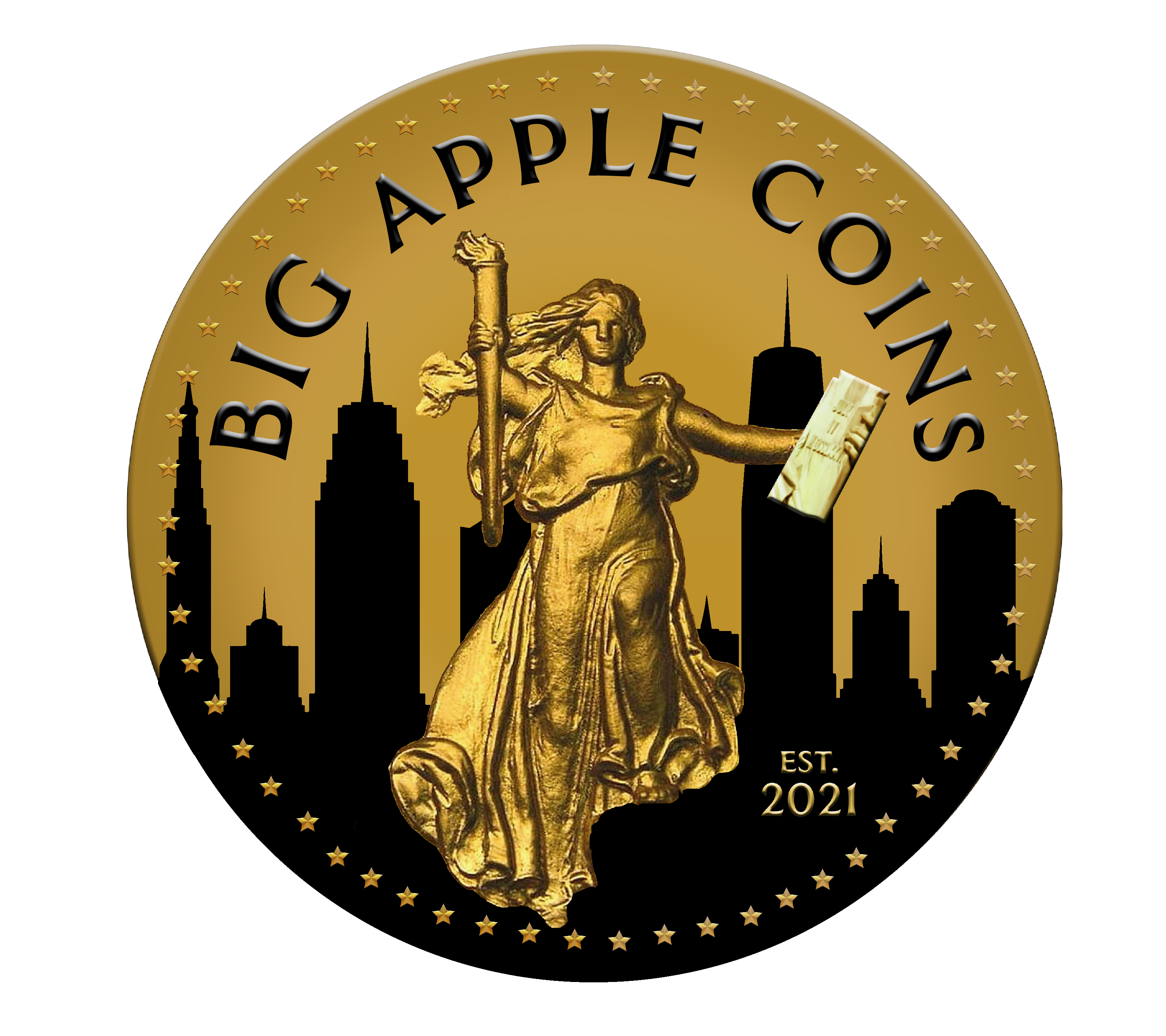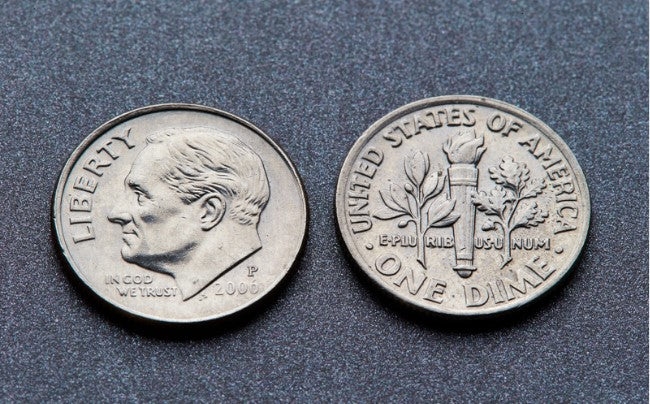The Seated Liberty Half Dime is an important staple in U.S. coinage history and has importance stemming from its composition and design. Collectors often search for key date nickels and half dimes to complete their coin collections. Unlike today's nickel the five-cent piece was made of silver which makes it more valuable as a historical relic.
The Half Dime was first produced by the United States Mint in 1792 and was circulated until being replaced entirely by the five-cent piece using the nickel composition in 1873. The Seated Liberty Half Dime truly saw the last of silver half dimes, as it ended a string of quasi coinage with the very first being the Bust Half Dime and continued to morph into different styles until the Capped Bust Half Dime ended production in 1837.

Symbolism and Composition of the Seated Liberty Half-Dime
The Seated Liberty Half Dime was designed by Christian Gobrecht the third Chief Engraver of the United States Mint and is easy to recognize due to its depiction of Lady Liberty proudly seated on a rock. Lady Liberty is holding a pole with a Phrygian cap which symbolizes Liberty and the shield she is resting on has the word "LIBERTY" inscribed on it to symbolize the country's allegiance to Liberty. The first Seated Liberty Half Dime coins were produced in 1837.
The history of the weight had more than one change over the years as it was coined from 1837-1852 at 90% silver but weighed around 1.34 grams. The weight was reduced approximately to about 1.24 grams in 1853. Certain examples from 1860 and others from the mint in New Orleans are especially coveted by collectors.
Like if you want to know about rare coins then must read below:
For expert tips on successful rare coin investing, read our blog on the top 9 essential strategies of successful rare coins
Historical Importance and Minting Variations
The Philadelphia Mint began producing proof editions of this coin in large quantities from 1860 onwards. However, the New Orleans Mint promptly ceased production of this and other U.S. coinage upon the outbreak of the Civil War. Indeed, Confederate forces took control of the mint with the intention of producing coinage for the newly established territory.
Subsequently, the San Francisco Mint commenced production of Seated half dimes bearing the S mintmark in 1863. It is notable that the 1863-1870 half dimes have relatively low mintage numbers. The 1870-S Seated Liberty half dime is mysterious because despite the San Francisco Mint having six die pairs for this coin. However, only one coin was produced from these dies.
The Seated Liberty half dime was minted for the last time in 1873. Congress proposed a comprehensive update to the coinage system and to eliminate the Seated half dime and introducing the nickel 5-cent piece as a more cost-effective alternative.
Seated Liberty Half-Dime Design History
1873 saw the end of the Seated Liberty Half Dime. The House introduced a motion to modernize our coinage system and voted to replace the Half Dime with a five-cent nickel. This was one of the first signs of discontinuation of some types of minting with precious metals to allow for easier circulation with cheaper and less valuable metals. Both the nickel and half-dime have undergone design alterations over time to reflect the historical development of the United States.

Design Evolution of the Seated Liberty Half-Dime
The Seated Liberty Half Dime underwent several notable design changes Throughout its nearly four-decade production run. The earliest versions of the coin minted in 1837 lacked the star border around Liberty a feature added in 1838. This small design change distinguished the later coins from earlier ones and added complexity for collectors.
Another big change occurred in 1853 when the U.S. Mint reduced the coin's weight. Arrowheads were placed on either side of the date on the coin's obverse to denote this change. This reduction in silver content was necessary due to the economic conditions of the time. It led many to hoard the heavier earlier versions of the coin. The arrowhead design served as a visual cue to differentiate the new lighter coins from the older heavier ones.
Mintmarks and Their Importance
The Seated Liberty Half Dime was produced at several U.S. Mint locations, each identifiable by specific mintmarks. Coins minted in Philadelphia bear no mintmark, while those produced in New Orleans and San Francisco feature an "O" and "S," respectively. These mintmarks are located within or below the wreath on the reverse side of the coin. The presence and location of these mintmarks are crucial for collectors as they help identify the coin's origin and can significantly affect its value, especially when paired with certain years of mintage.

Conclusion:
The Seated Liberty Half Dime is a tangible connection to a historic era in American history. This coin witnessed key changes in the nation's economy from its inception in 1837 to its final minting in 1873. Even today, it remains a highly prized collectible not only for its silver content but also for its historical importance and the story it tells of America's journey. The Seated Liberty Half Dime is a coin that offers a glimpse into a passed era while remaining a cherished piece of numismatic history.
Check out Big Apple Coins Google reviews and start planning your next coin deal today!
Frequently Asked Questions
1. What makes the Seated Liberty Half Dime valuable to collectors?
The Seated Liberty Half Dime is prized for its silver content, historical significance, and unique design changes over time. Coins from specific mints or years can significantly increase in value.
2. What are the key design features of the Seated Liberty Half Dime?
This coin features Lady Liberty seated on a rock, holding a Phrygian cap symbolizing liberty, and a shield with the word "LIBERTY" inscribed. Design changes, such as the addition of stars in 1838 and arrowheads in 1853, distinguish different periods of the coin.
3. How did the Seated Liberty Half Dime evolve over time?
The coin underwent several design and weight changes from 1837 to 1873, including the addition of a star border, arrowheads to signify a reduction in silver content, and mintmarks indicating production location.
4. Why did the Seated Liberty Half Dime stop being minted?
In 1873, Congress replaced the Seated Liberty Half Dime with the nickel five-cent piece, a more cost-effective option for circulation, marking a shift from silver to less valuable metals.


Share:
Investing in Silver Bars and Coins: Key Benefits and Potential Risks
How Platinum Bullion Can Secure Your Financial Future?